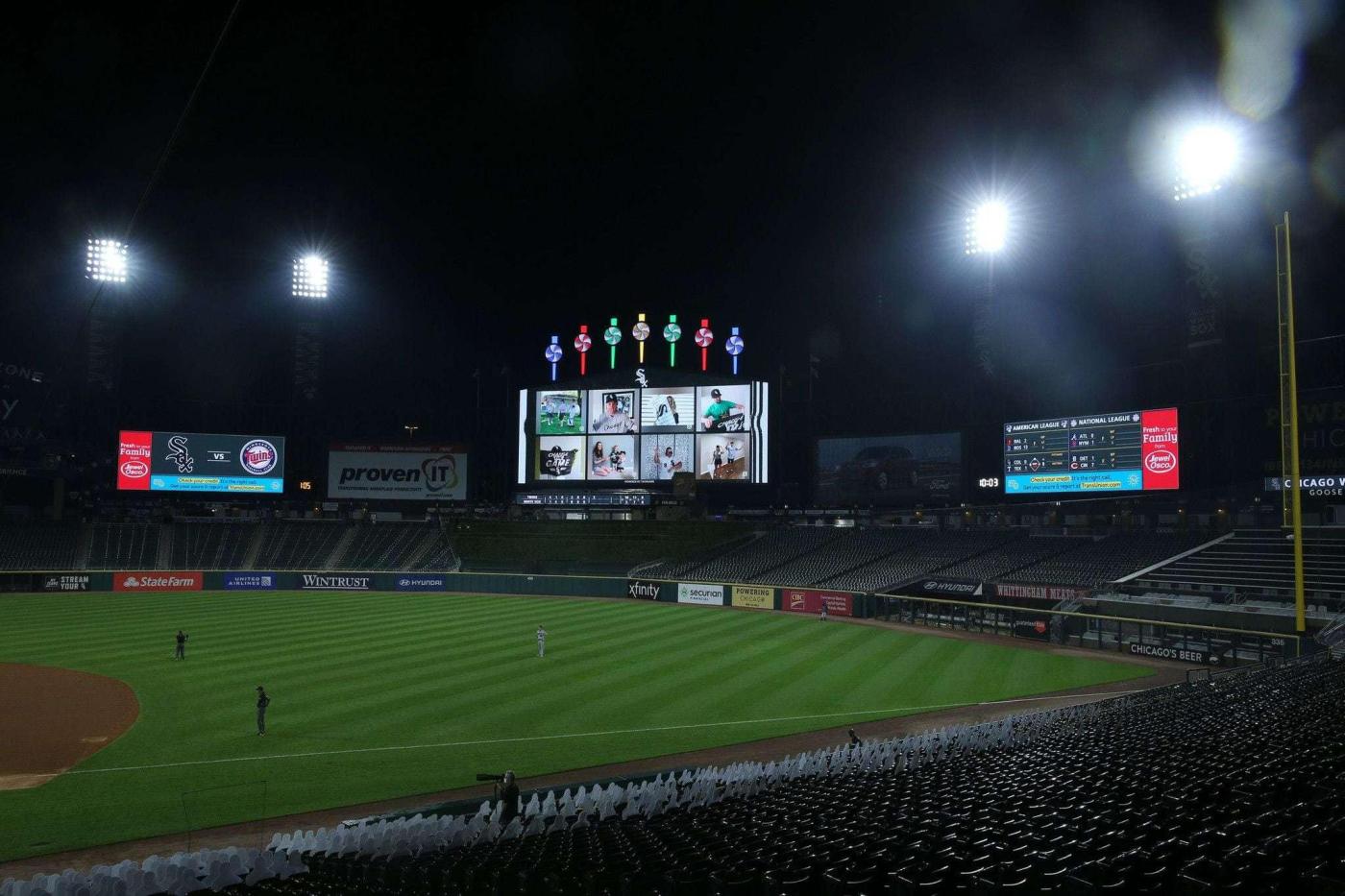
Column: Would a new stadium solve the Chicago White Sox’s attendance problems? Only if it comes with a new owner.
A new Chicago White Sox ballpark in the South Loop is only a figment of someone’s imagination right now.
But at least the news Wednesday that the Sox are in “serious talks” to build a downtown stadium in the area known as “the 78″ near Clark Street and Roosevelt Road gave us something to talk about besides the Justin Fields-versus-Caleb Williams debate during a down time for our local sports teams.
With no SoxFest on tap and no big-name signings to get fans excited about the season, the leak of the ballpark rumor provided the Sox with front-page news on another cold, dreary day in January.
Nothing wrong with that.
Who doesn’t want to dream of a beautiful new ballpark with a skyline view and surrounding bars and restaurants to go to before and after games? It’s what the Sox should’ve done in the mid-1980s when they held the state hostage for public funding for what was then called new Comiskey Park.
Instead we got an unlovable structure ridiculed by fans for its steep upper deck, a moat separating the field from the bleachers and a lack of entertainment options anywhere near the park. The “Ball Mall” was the popular nickname after it opened in 1991.
“When people came out for that first opening day, they were in awe of the place,” Chairman Jerry Reinsdorf told the Tribune’s Teddy Greenstein in 1999. “But now the stadium is a popular thing to attack. Look, I thought people wanted unobstructed views and wide aisles. I guessed wrong.
“People wanted a more homey feeling. But I really believe that if we had built Camden Yards instead, I would have been massacred. People wanted a modern park.”
Oops.
In a rare mea culpa, Reinsdorf eventually agreed to a series of renovations that included removing eight rows and 6,600 seats from the upper deck and a canopy-style roof to replace the flat one over the 13 highest rows. A sports bar/restaurant was constructed across the street. The moat was filled in with new bleacher seating. The Sox even allowed tailgating.
Once renovated, “The Cell” grew on fans, at least those who didn’t have to sit in the upper deck. It wasn’t as beloved as old Comiskey Park but it was fine. Still, the only time outside opening day that the ballpark was typically filled was when the Sox were in the midst of a winning season or playing the Cubs in the City Series.
Now comes another mea culpa from Reinsdorf — an admission that what’s now called Guaranteed Rate Field is obsolete after only 33 years. Reinsdorf wouldn’t say that, of course, but by making a new ballpark a priority, it’s obvious he “guessed wrong” about the one at 35th Street and Shields Avenue.
After the Sun-Times broke the news about new stadium talks between the Sox and the city, Mayor Brandon Johnson and the Sox released a statement Thursday.
“Mayor Brandon Johnson and Chicago White Sox Chairman Jerry Reinsdorf met to discuss the historic partnership between the team and Chicago and the team’s ideas for remaining competitive in Chicago in perpetuity,” the statement read. “The partnership between the City and the team goes back more than a century and the Johnson administration is committed to continuing this dialogue moving forward.”
The idea the Sox will remain competitive in Chicago “in perpetuity” suggests they are competitive now. Anyone following the team’s downward spiral since the 2022 postseason, including its uninspiring offseason this winter, knows that’s a joke.
But for the sake of argument, let’s assume the Sox intend to compete in the near future. Would a ballpark in the South Loop help bring in fans who generally have avoided going to Sox Park over the last couple of decades?
If they build it, will they come?
Only if a new ballpark comes with a new owner.
It goes without saying that Reinsdorf’s popularity among Sox fans is lower than the sewer system under Lower Wacker Drive. But Reinsdorf, who turns 88 in February, said in September that he had no intention of selling the Sox.
“Friends of mine have said, ‘Why don’t you sell? Why don’t you get out?’” he said. “My answer always has been, ‘I like what I’m doing, as bad as it is, and what else would I do?’
“I’m a boring guy. I don’t play golf. I don’t play bridge. And I want to make it better before I go.”
Evidence of Reinsdorf making the Sox better is harder to find than the owner of the gun who fired bullets that hit two fans last summer in the Guaranteed Rate Field bleachers. The payroll is going down, and the organization’s strange infatuation with bringing in former Kansas City Royals personnel has reached a crescendo.
A new South Loop ballpark sounds cool, but it would not be a panacea for the Sox’s attendance problems, just as the new Comiskey Park wasn’t after that new ballpark smell wore off following the first few seasons. Traffic jams on the Kennedy and Dan Ryan expressways won’t make it any easier to get to, and taking the “L” at night is much scarier now than it was prepandemic.
Even in the highly unlikely event the Sox would pay most of the tab, what would happen to the soon-to-be white elephant in Bridgeport that Illinois taxpayers helped pay for? Will the Sox ever explain why they need to leave after all those renovations?
At least the Sox should acknowledge the current ballpark, the last one built before the “retro” parks such as Camden Yards, was an architectural mistake.
“I talk to fans a lot, and they tell me they don’t like the ambience,” Reinsdorf told Greenstein in 1999 during another Sox rebuild. “But what people really want is something better in the uniforms.”
That statement rings true 25 years later.
Maybe the Sox need to work on that before talking about a new ballpark.
()


